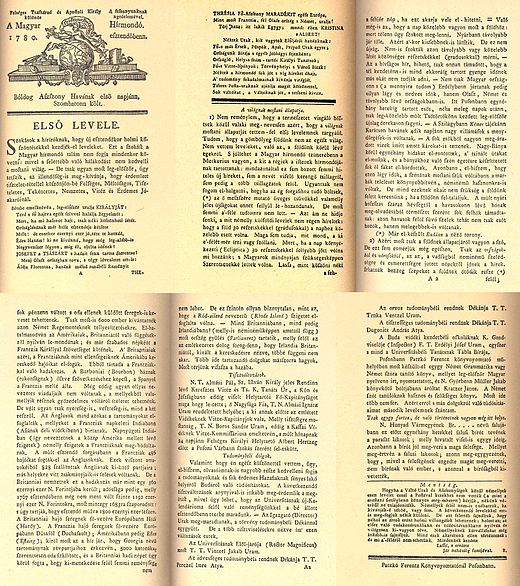Magyar Hírmondó – Newspapers and the beginning of knowledge transfer in Hungary – Pozsony (Bratislava)
Fact of the Hungarian figure „First university of Hungary (Universities and sciences)”
Part of the „Transfer of the culture” topic
The Magyar Hírmondó, founded in Bratislava (then Pressburg) in 1780 by Mátyás Ráth, was the first Hungarian-language newspaper. Its establishment marked a significant turning point in the history of knowledge transfer in Hungary, playing a vital role in the spread of information and ideas during the Enlightenment. Bratislava, an important cultural and political hub within the Habsburg Empire, was the perfect location for this publication, as it connected the Hungarian, Austrian, and wider Central European intellectual circles.
The Magyar Hírmondó provided the Hungarian public with access to European and domestic news, scientific developments, political debates, and cultural discussions. At a time when literacy and access to printed materials were growing, the newspaper helped foster a more informed society, promoting the ideals of education, national identity, and modernity. This publication contributed to the broader Enlightenment goals of rational thought and public discourse, reflecting the values of knowledge and progress that spread across Europe in the 18th century.
Beyond its domestic impact, the Magyar Hírmondó was part of a wider Central European tradition of newspapers and pamphlets that played a crucial role in the dissemination of knowledge. It represented the growing interconnectedness of European intellectual life, as ideas were exchanged more freely across borders. Newspapers like the Magyar Hírmondó connected Hungarian readers to broader European debates, allowing Hungary to engage in the intellectual movements of the time. The paper also served as a platform for the burgeoning Hungarian literary scene and helped to promote the Hungarian language in print, aligning with national efforts to strengthen cultural identity.
This newspaper’s significance is also tied to the early development of Hungarian journalism and its role in shaping public opinion. Its legacy continued in later newspapers and periodicals, which contributed to the growing sense of Hungarian national identity and the cultural revival of the 19th century, leading up to pivotal events like the Hungarian Revolution of 1848. Thus, the Magyar Hírmondó stands as a symbol of how printed media helped lay the groundwork for modern cultural and political movements in Hungary, and how knowledge transfer between nations fueled Central Europe’s intellectual progress.





